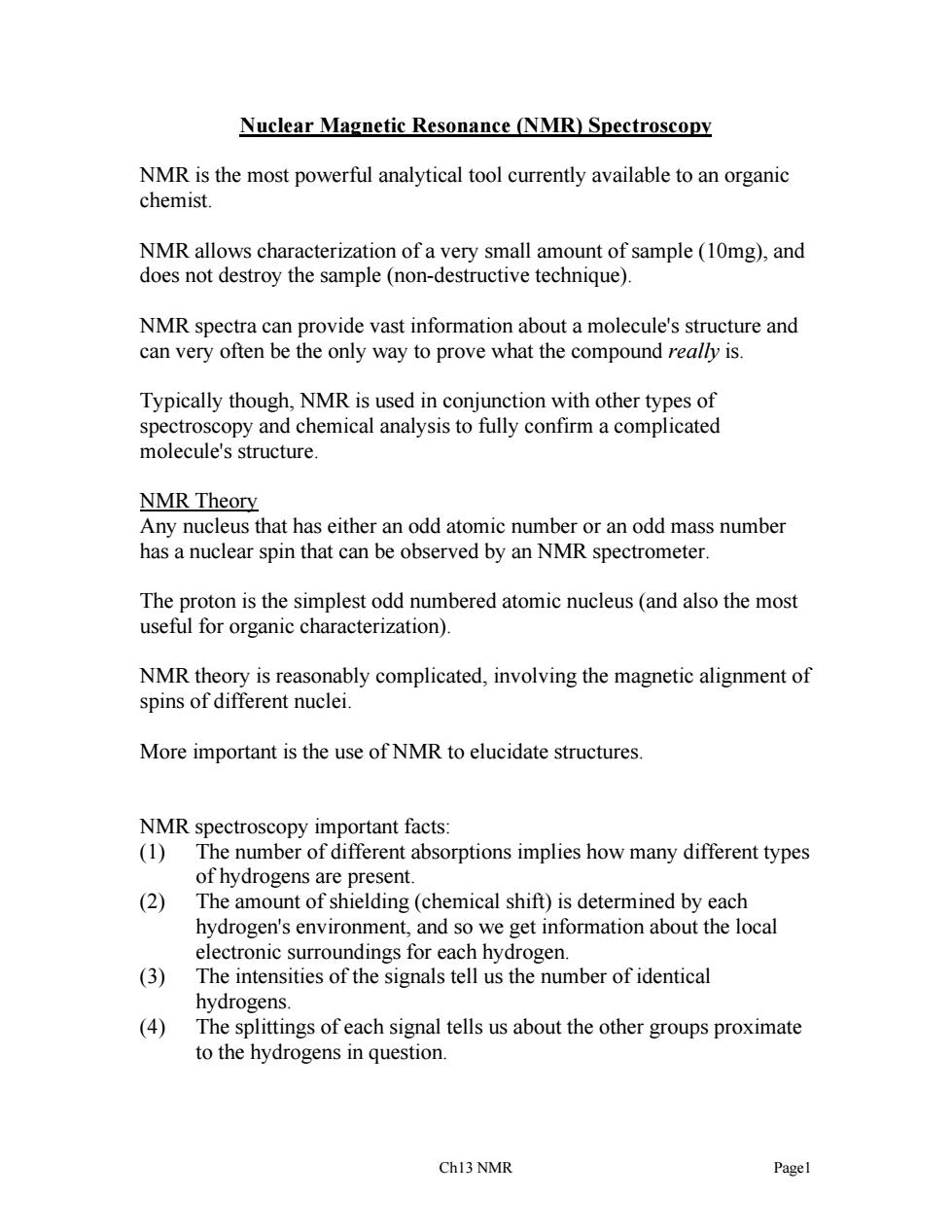正在加载图片...

Nuclear Magnetic Resonance (NMR)Spectroscopy NMR is the most powerful analytical tool currently available to an organic chemist. NMR allows characterization of a very small amount of sample (10mg),and does not destroy the sample (non-destructive technique). NMR spectra can provide vast information about a molecule's structure and can very often be the only way to prove what the compound really is. Typically though,NMR is used in conjunction with other types of spectroscopy and chemical analysis to fully confirm a complicated molecule's structure. NMR Theory Any nucleus that has either an odd atomic number or an odd mass number has a nuclear spin that can be observed by an NMR spectrometer. The proton is the simplest odd numbered atomic nucleus(and also the most useful for organic characterization) NMR theory is reasonably complicated,involving the magnetic alignment of spins of different nuclei. More important is the use of NMR to elucidate structures. NMR spectroscopy important facts: (1) The number of different absorptions implies how many different types of hydrogens are present. (2) The amount of shielding (chemical shift)is determined by each hydrogen's environment,and so we get information about the local electronic surroundings for each hydrogen. (3) The intensities of the signals tell us the number of identical hydrogens. (4) The splittings of each signal tells us about the other groups proximate to the hydrogens in question Ch13NMR PagelNuclear Magnetic Resonance (NMR) Spectroscopy NMR is the most powerful analytical tool currently available to an organic chemist. NMR allows characterization of a very small amount of sample (10mg), and does not destroy the sample (non-destructive technique). NMR spectra can provide vast information about a molecule's structure and can very often be the only way to prove what the compound really is. Typically though, NMR is used in conjunction with other types of spectroscopy and chemical analysis to fully confirm a complicated molecule's structure. NMR Theory Any nucleus that has either an odd atomic number or an odd mass number has a nuclear spin that can be observed by an NMR spectrometer. The proton is the simplest odd numbered atomic nucleus (and also the most useful for organic characterization). NMR theory is reasonably complicated, involving the magnetic alignment of spins of different nuclei. More important is the use of NMR to elucidate structures. NMR spectroscopy important facts: (1) The number of different absorptions implies how many different types of hydrogens are present. (2) The amount of shielding (chemical shift) is determined by each hydrogen's environment, and so we get information about the local electronic surroundings for each hydrogen. (3) The intensities of the signals tell us the number of identical hydrogens. (4) The splittings of each signal tells us about the other groups proximate to the hydrogens in question. Ch13 NMR Page1